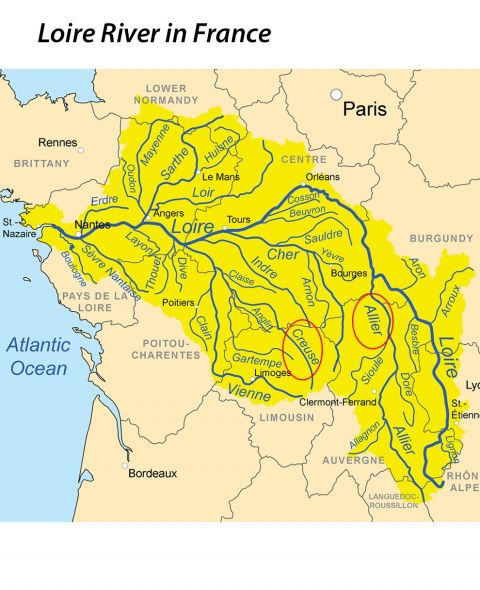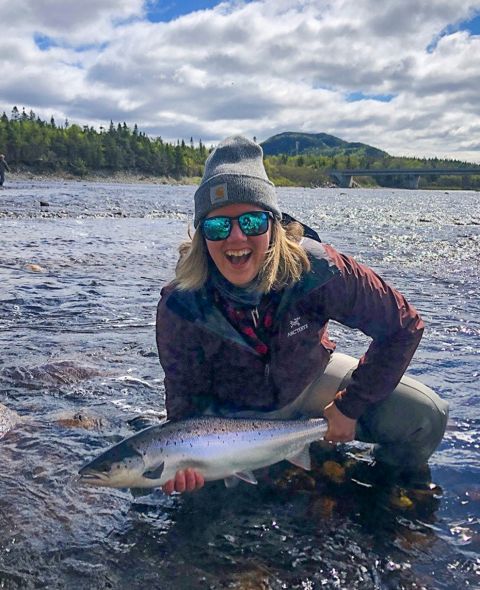
Subscribe & stay up-to-date with ASF

For Canadians from Ontario and further west, it continues to be a challenge as well, with interprovincial borders into New Brunswick, Nova Scotia and Newfoundland remaining largely closed.
Take the seven minutes to watch the video below.
If you prefer this in French, that too is available, on YouTube:
And even beyond that, it is available with Norwegian subtitles if that is helpful.
The most important points are these:
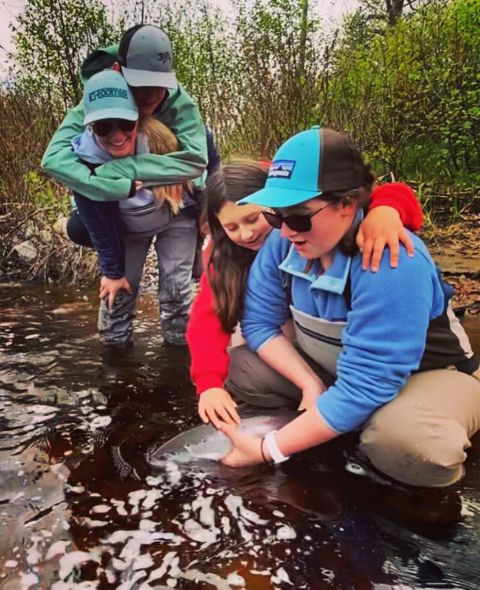
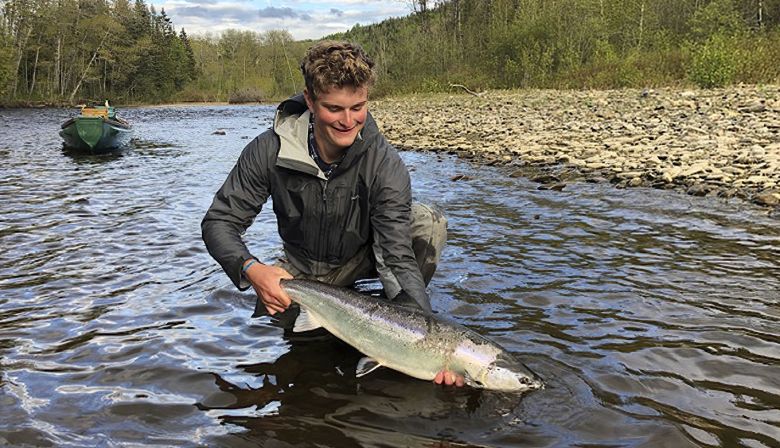
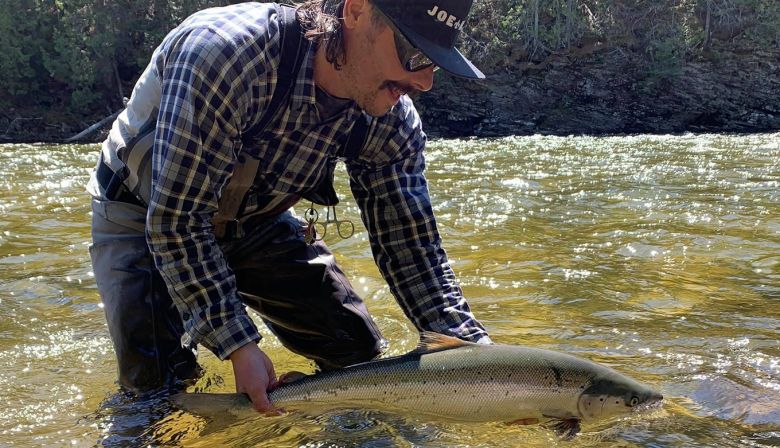
This early in the season, the news is encouraging with reports from salmon rivers of fish entering their home waters in good numbers during the large full moon tides of last weekend.
Lower Saint-Lawrence rivers such as the Matapedia and Causapscal rivers are doing quite well to date.
Long-time Causapscal guide, Guylain Raymond, is reporting good angling conditions which have provided his clients great action since the weekend.
“River levels on both the Matapedia and Causapscal are dropping very fast but luckily water temperatures are making it conducive for the salmon to cooperate”. Susan McArthur (director, ASF Canada) and her son Jack fished the Causapscal for the first time and were rewarded for their efforts when Jack released a wild Causapscal salmon in sector 1.


The Bonaventure and Cascapedia rivers have started a little bit slower than other but angling has picked up in the last few days.
The Saguenay region rivers are also reporting the first catches of the season as well as rivers of the North Shore such as the Escoumins and on the Moisie.
The APRM (Moisie River Protection Association) is reporting to date, for the section of the river they manage, 31 salmon being landed, of which 23 have been released, 7 killed and 1 kelt. To June 10th last year, 18 salmon had been landed, including 6 salmon killed, 10 released and 2 kelts.

Les rivières dans du Bas-Saint-Laurent tel la Causapscal et la Matapédia se comporte assez bien jusque ce jour, « les débits d’eau sont à la baisse de façon drastique pour l’instant, mais la température de l’eau se maintient qui a produit des conditions de pêche productive » déclare Guylain Raymond, guide de renom de cette région.
À leurs premières visites sur la rivière Causapscal, Susan McArthur, membre du conseil d’administration de l’ASF (Canada) et son fils Jack ont connu du succès lors de leurs séjours dans le secteur 1.
Les rivières de la ville de Gaspé connaissent un bon début de saison grâce à la montaison qui s’est manifestée la fin de semaine dernière. « Les pêcheurs et les saumons sont au rendez-vous pour l’instant, j’ai aperçu une quinzaine de saumons à la fosse du pont Baillargeon samedi matin » déclare Ann Smith de Québec Sporting. Comme dans le bas Saint-Laurent, les rivières auront besoin d’un renflouement d’eau plutôt que plus tard.
La Bonaventure et la Cascapédia ont été lentes à démarrer au niveau des prises, mais la situation s’est grandement améliorée depuis quelques jours.
Les pêcheurs des rivières du Saguenay ont également signalé la présence de Salmo depuis le début de leur saison.
Sur la côte nord, la pêche semble être très bien partie, L’APRM (Association de protection de la rivière Moisie) indique en date du 9 juin, que 31 saumons ont été enregistrés, dont 23 remises à l’eau, 7 récoltés et 1 saumon noir dans le tronçon de rivière qu’elle gère. À pareille date en 2019, un total de 18 saumons avait été enregistré.
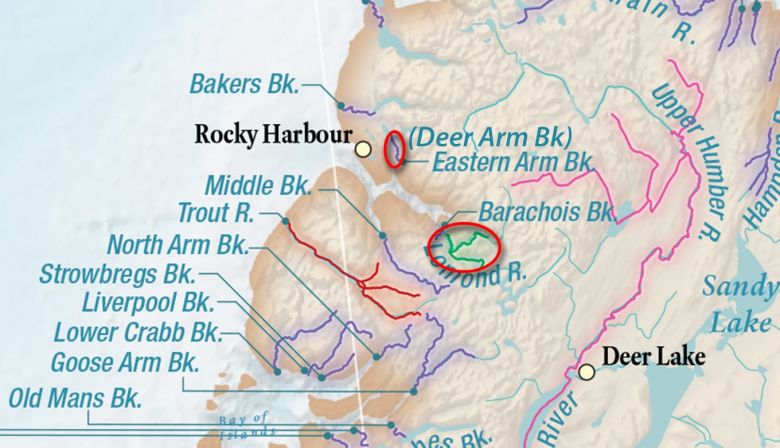
Although the regulations are not yet up on the Gros Morne National Park website yet, below are the regulations for the 2020 Atlantic salmon angling season in the park. It begins June 15.
Angling Season: Start Date 15 June 2020 – and End Date 7 Sep 2020
Restrictions:
Catch and possession limit of Atlantic salmon is reduced to 2 salmon
Anglers will be issued 1 white and 1 yellow tag. The white tag may be used on Deer Arm Brook and Lomond River, the yellow tag on Lomond River only. A retained salmon must have both a valid national park salmon tag and a green provincial tag affixed through the gill cavity and mouth of the salmon and securely locked.
Salmon angling will only be permitted on the following waters: Lomond River from the park boundary to high tide mark at Bonne Bay, East Branch Lomond River, and Deer Arm Brook (Eastern Arm Brook) from Deer Arm Pond to the high tide mark at Bonne Bay.
Trout fishing is prohibited on park waters open to salmon fishing. All trout caught on those waters must be released unharmed.
Catch and release of salmon is prohibited with the following exceptions: where a salmon is greater than 63 cm; where a salmon is less than 30 cm and where a salmon is caught in waters not open to salmon angling. In these instances, the salmon must be released immediately.
Angling is prohibited in Deer Arm Pond within 90 metres of the outflow of Ten Mile feeder (note “the feeder” is closed to all fishing by regulation).
WHY: These measures are being implemented due to concern about recent observed declines in salmon populations within Gros Morne National Park and throughout the province.
NOTE: Any contravention of this notice constitutes an offence under section 24(2) of the Canada National Parks Act. Failure to comply with the Act, the applicable park regulations or this notice may be grounds for prosecution under the Canada National Parks Act.
Check for these regulations in the weeks ahead on the national park’s website
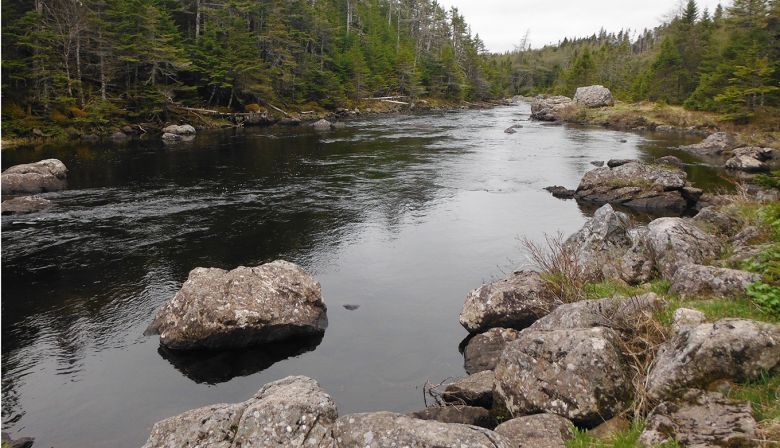
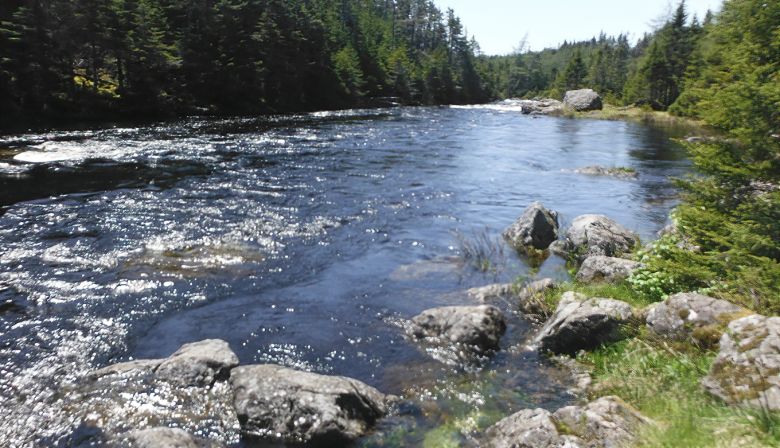
As such, angling opportunities have been somewhat limited. Anglers have been hooking a few fish on the Bay St. George rivers. Otherwise, there have been few reports coming from across the province because high water levels are making it difficult for angling.
The good news is the forecast for the next few days is calling for fine weather, so we can anticipate that within a few days angling conditions will improve as water levels begin to subside.

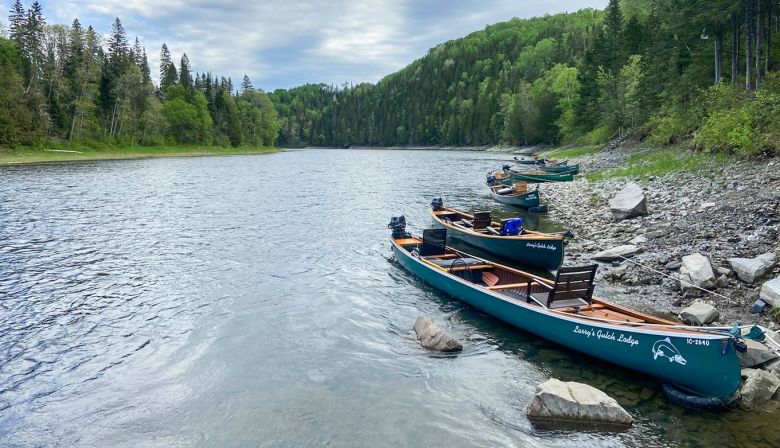
Jacques Heroux, Manager of Larry’s Gulch Camp, notes:
As restrictions from Covid-19 Pandemic begin to relax, we are preparing to accept fishermen here at Larry’s Gulch.
We are accepting only eight anglers at a time this summer, with one per boat and one per cabin. We will have hand-washing/sanitizer stations set up, and will be cleaning and disinfecting areas twice each day, and between the departure and arrival of groups. We are asking guests to bring their own masks, scarves or face coverings if they need them.
Jacques mentioned that there were still excellent dates available at the lodge.
Right now the water is almost perfect, being clear, although just a touch low. If you are from New Brunswick, this would be a great year to try Atlantic salmon fly fishing on this wonderful river.
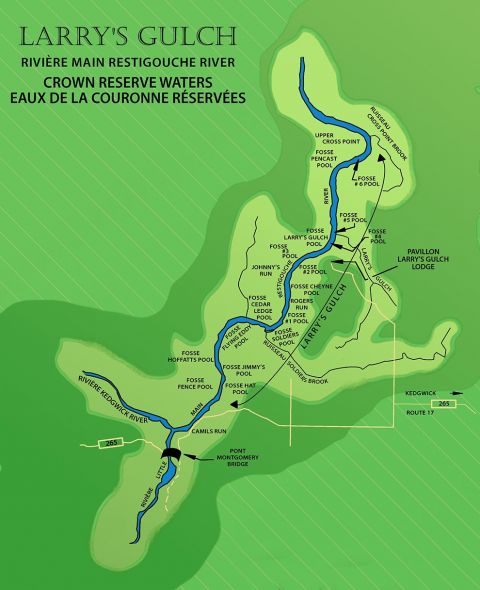
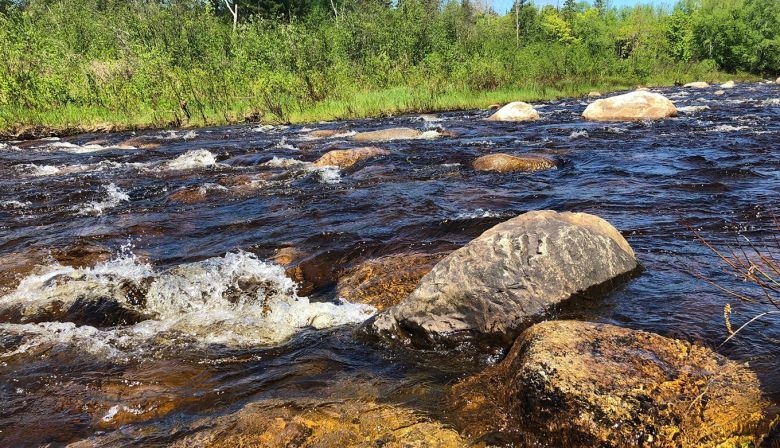
While it is still early, a few Atlantic salmon are showing up.
Much of the talk around Blackville has been the Atlantic salmon brought in and released by Jason Curtis.
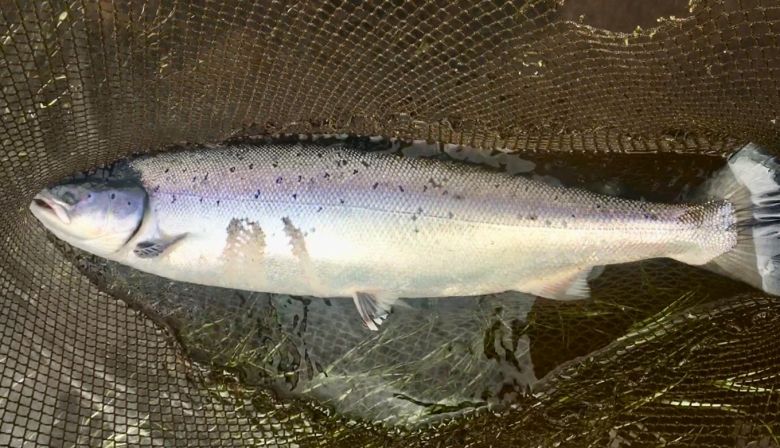

After a 10-day unseasonable heat wave, things appear to be back to normal early June temperatures, thankfully. We still need rain, however. As snowmelt in the headwaters of New Brunswick’s central and northern rivers peters out, now is the time for spring rain to bring in the bright salmon.
Some good news is that anglers are starting to catch those very first early salmon on the Restigouche system and at least one bright 12 lb fish has been caught on the Southwest Miramichi.
Striped bass spawning in the Miramichi estuary peaked at the end of May and over the weekend, so the bass should be mostly clearing out of the river soon. Eel Ground First Nation has begun their commercial harvest of striped bass and are fishing four nets instead of two this year in an effort to reach their quota of 50,000 bass. They are doing an excellent job methodically growing the fishery and doing things right.
St. Croix River
The big news this year is the more than a half million alewives that have ascended the fish ladder at Milltown. The St. Croix greatly needs restoration, and part of this is increasing the biomass in the river, and the alewives are part of this renewal that is needed.
As many know, NB Power a year ago announced that it is planning to remove the Milltown Dam. With the Covid-19 the process of working towards that removal has slowed, but not stopped.

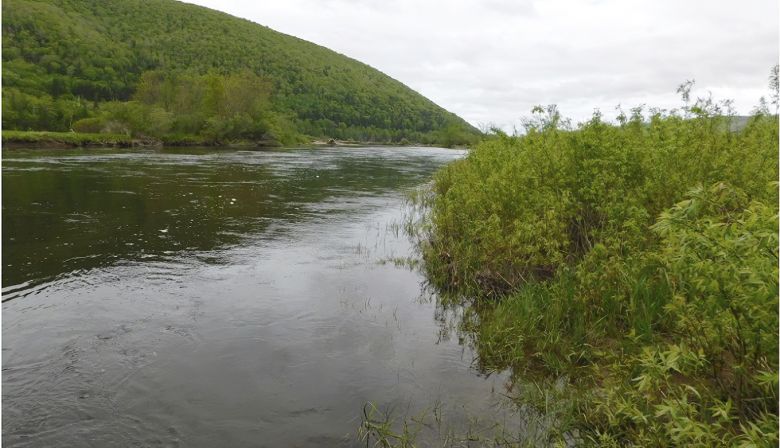
Margaree
Greg Lovely says:
Lots of fishermen were around on the weekend and a lot of nice trout were hooked.
I did not see any Atlantic salmon and did not here of any hooked yet. I watched some stripers having their way with migrating smolt. Nova Scotia borders are open, but fishermen arriving from out of province must self isolate for 14 days before fishing. That is going to make it extremely tough on people from outside Nova Scotia wanting to fish salmon in the Margaree this year.
A late report, June 11 2020, from an angler on the Margaree:
River conditions are great. Plenty of anglers on the river from the Lower Barracks to the run below Doyle’s Bridge. Have not heard of a salmon landed so far.
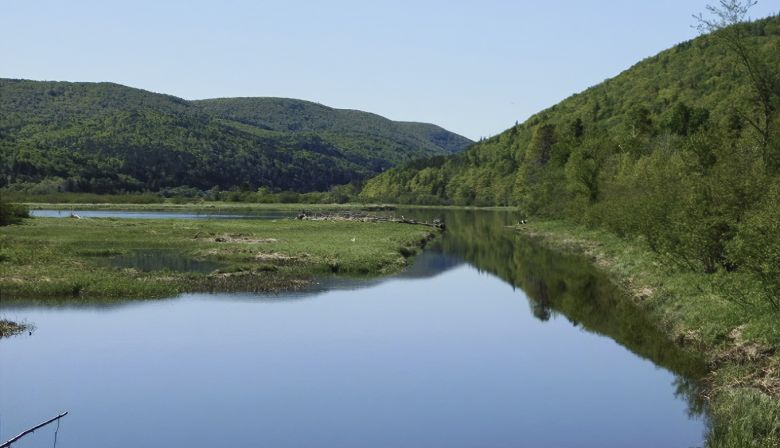
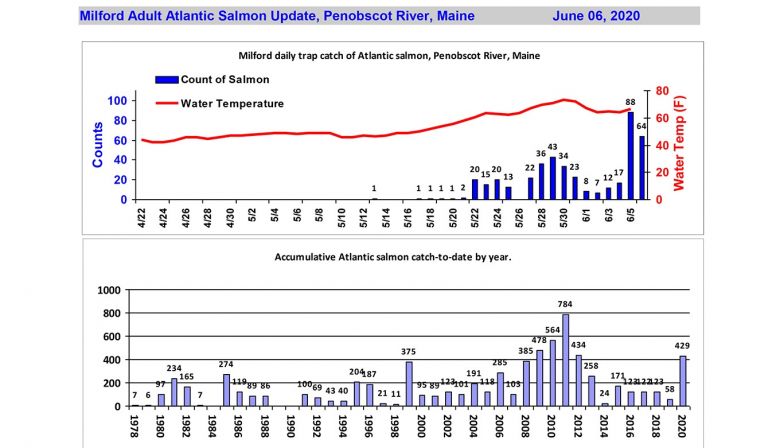
The year 2020 is turning out to be exceptional. Recently river temperatures dropped nearly 10 F with the chilly nights early last week, but has steadily been rising since. With he drop in temperature came a drop in fish numbers. Rapid drops in temperature tend to do that. The week started off slow, but made up for that over the last weekend.
I have never seen so many shad and sea lamprey passing through the fishway! We passed more shad yesterday (3,844) than we passed all year in 2019 (2,531) and almost as many as we passed total in 2017 (4,012), and 2018 (4,121).
There is no doubt in my mind that we will surpass 2016 (8,231) – currently the best year at Milford for shad so far. We also passed 2,374 sea lamprey yesterday. That’s more than we have counted in every previous year except 2016. And we are likely to surpass that number as well.
Salmon have shown up in great numbers this year.
As of June 8 there have been 473 salmon at the Milford Fishlift and two more at Orono Dam.
Maranda Nemeth of ASF’s Maine Headwaters Project says:
Jen Noll from Maine DMR observed fry along Temple Stream at the site where we egg-planted back in March as an all female field crew that day. Stocking site is upstream of the Walton’s Mill Dam that we are planning to remove next year.
The Temple Stream project will also make some physical changes. Maranda notes:
The Temple Stream project will replace two undersized road crossing culverts this summer and remove the Walton’s Mill Dam in 2021. Altogether this work will improve migratory movements to restore access to spawning and rearing habitat along 52 miles of stream.
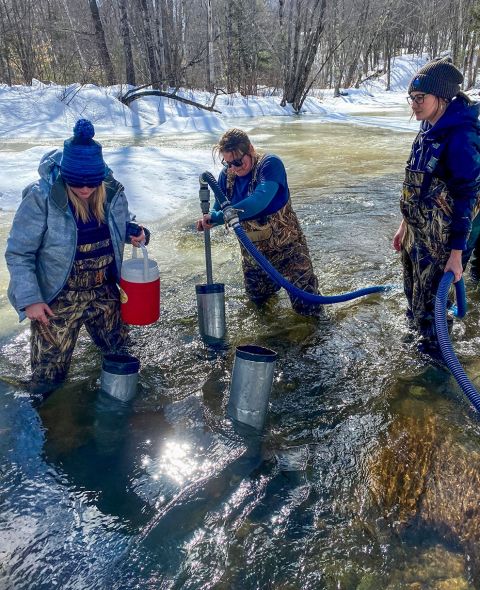
Temperatures have dropped to around 17 C on the lower Kennebec this week. Again, flows are very low on the mainstem of the the river. According to the USGS gauge in Sidney, current flow conditions are at 3,930, which is below the 25th percentile discharge for this date (based on 34 years of data).
The river herring catch at Benton Falls has recently started to switch to mostly blueback herring at this point.
At Lockwood fish lift, river herring has just started picking up within the last day or two. Salmon have been steadily coming into the fishway – usually capturing one or two daily, but as many as four in a day.
Benton Falls total catches for 2020:
River herring: 2,794,707
9 American shad
Lockwood fish lift catches this week:
River herring: 101,330 trucked from Lockwood
American shad: 7
Atlantic Salmon: 17
Narraguagus
There have been 21 large Atlantic salmon counted as of June 7
Norwegian rivers, swelled by record snowmelt, have already yielded some huge wild salmon and trout, and this year, Norwegian sportsfishers have the rivers to themselves. Foreigners willing and able to pay enormous prices to fish in privately owned rivers still aren’t allowed to enter Norway because of Corona virus containment measures.
The season officially started at midnight on May 31st, and it’s reserved only for Norwegians at least until June 15, when the first tourists from Denmark will be allowed to enter Norway. Norway’s wild salmon has attracted rock stars and royalty over the years, but only the country’s own 83-year-old King Harald is likely to be among the latter if he’s up for some fishing this year. He’s been an avid sports fisherman for years.
The Tana River in Northern Norway has emerged as the one yielding the most salmon over the past decade, according to a new overview from state statistics bureau SSB (Statistics Norway). An average of 11,000 salmon have been hooked every year along the Tana, followed by the Namsen and Alta waterways with 8,000 and 7,000 respectively.
Two men from Trøndelag hooked a 15-kilo (33lb) fish in the Namsen on opening day, June 1st, and there were many other happy fishing enthusiasts as well. The season runs for three months and hotel operators along the rivers are hoping to offset the lack of foreign visitors with Norwegians, but many may not be inclined to pay the tens of thousands of kroner it costs for a week of fishing with guides, all meals and accommodation.
“The landowners along the rivers rely on salmon fishing tourism, and are just as hard-hit as others in the tourist industry,” Pål Mugaas of the national association of salmon river owners told NRK. “It’s difficult when a large portion of your market disappears.”
https://www.newsinenglish.no/2020/06/02/great-start-to-wild-salmon-fishing-season/
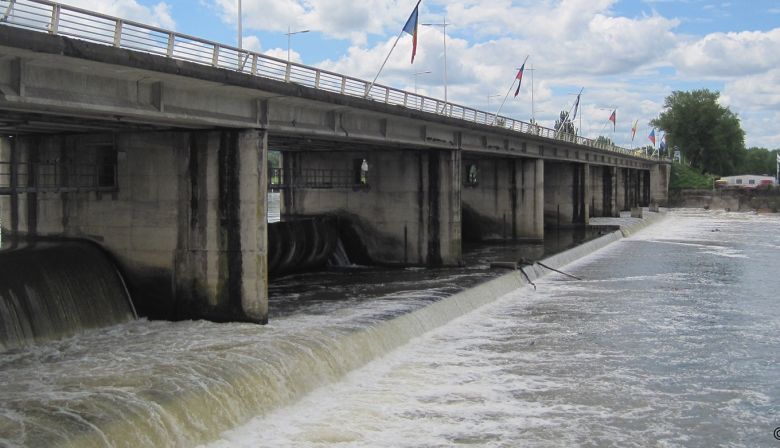
To June 8, there have been 351 salmon pass up the fish ladder at Vichy on the Allier branch of the Loire. In the past few years the number migrating upstream have been less than 400
At Descartes on the Creuse branch, there have been 27 salmon so far. That number is low compared to even a few years ago.
Definitely not a good year on the Loire.
